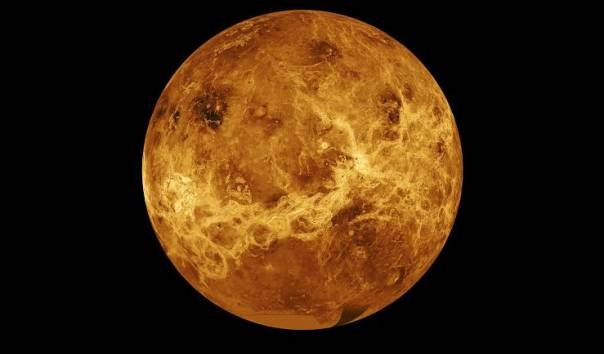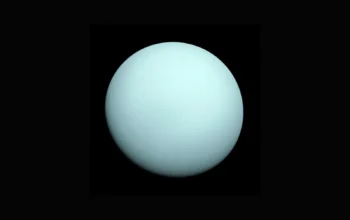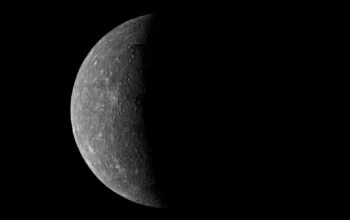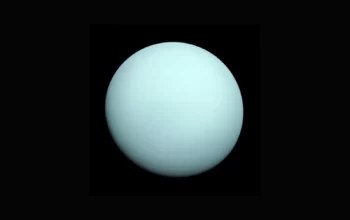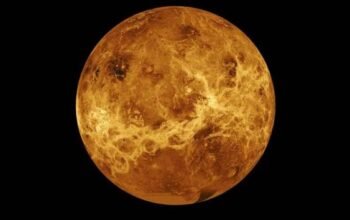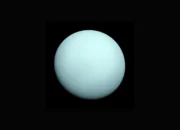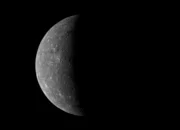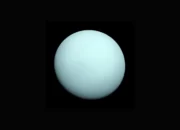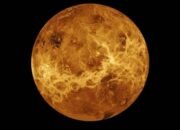middleportal.com – Venus and Earth, two neighboring planets in our solar system, share several similarities while also exhibiting distinct differences. Understanding these similarities and differences can provide valuable insights into the formation and evolution of terrestrial planets. In this article, we will explore the various aspects in which Venus and Earth align and diverge.
Similarities:
1. Size:
Venus and Earth are remarkably similar in terms of size, mass, and density. Venus, with a diameter of approximately 12,104 kilometers, is only slightly smaller than Earth, which boasts a diameter of around 12,742 kilometers. The comparable sizes of these two planets contribute to their similar gravitational forces.
2. Location:
Venus and Earth occupy similar positions within the solar system. Both planets are terrestrial, meaning they are composed primarily of rock and metal. Furthermore, they are situated within the inner region of the solar system, with Venus orbiting closer to the Sun than Earth.
3. Origin:
Scientific evidence suggests that Venus and Earth likely formed in the same part of the solar nebula, a vast cloud of gas and dust from which our solar system originated. Both planets are thought to have emerged from the same rocky planetary building blocks, known as planetesimals.
4. Orbit:
Venus and Earth follow similar elliptical orbits around the Sun. While their orbits are not identical, they share comparable characteristics. Both planets revolve around the Sun in a counterclockwise direction, and their orbital periods are relatively close. Venus completes an orbit in approximately 225 Earth days, while Earth orbits the Sun in about 365.25 days.
5. Atmosphere:
Both Venus and Earth possess atmospheres that play a vital role in shaping their respective climates and weather systems. Venus’ atmosphere is predominantly composed of carbon dioxide, with traces of nitrogen and sulfuric acid. Similarly, Earth’s atmosphere consists primarily of nitrogen, with significant amounts of oxygen and other trace gases. The presence of atmospheres on both planets contributes to the greenhouse effect, which helps regulate their temperatures.
6. Surface Composition:
Venus and Earth share similarities in terms of surface composition. Both planets have rocky surfaces, although there are notable differences. While Earth’s surface features vast oceans and diverse landforms, Venus has a predominantly dry and desolate surface, devoid of liquid water. The geological processes that shaped their surfaces, such as volcanism and tectonic activity, have also left their distinct marks.
Differences:
1. Rotation:
A significant difference between Venus and Earth lies in their rotation. While Earth rotates counterclockwise on its axis, Venus rotates in the opposite direction, clockwise. This retrograde rotation is unique among the planets in our solar system and remains an intriguing scientific puzzle.
2. Surface:
Another notable difference is the nature of their surfaces. Earth’s surface exhibits a wide range of environments, including oceans, mountains, plains, and forests, supporting a diverse array of life forms. In contrast, Venus has a dry and inhospitable surface, with extreme temperatures and atmospheric pressure that make it hostile to life as we know it.
3. Atmosphere:
While both planets possess atmospheres, there are significant differences in their compositions. Venus’ atmosphere is dominated by carbon dioxide, creating a dense and suffocating environment. In comparison, Earth’s atmosphere contains a higher proportion of nitrogen and oxygen, making it conducive to supporting life as we know it.
4. Magnetic Field:
Unlike Earth, Venus does not possess a measurable magnetic field. Earth’s magnetic field plays a crucial role in protecting the planet from harmful solar radiation and helps create the auroras. The absence of a significant magnetic field on Venus exposes it to the full force of the solar wind and cosmic rays.
5. Temperature:
Venus experiences extreme temperatures, with a surface temperature that can reach up to 900 degrees Fahrenheit (475 degrees Celsius). In contrast, Earth’s temperature range is much milder, ranging from below freezing to scorching hot, depending on the location and season. The extreme temperatures on Venus make it inhospitable for life as we know it.
6. Atmosphere Composition:
While both planets have atmospheres, their compositions differ. Venus’ atmosphere contains a higher proportion of nitrogen compared to Earth’s atmosphere, but it lacks the significant amount of oxygen that is vital for supporting complex life forms. The differences in atmospheric composition contribute to the stark contrast in habitability between the two planets.
In conclusion, Venus and Earth exhibit numerous similarities, such as their size, location, origin, orbit, atmosphere, and surface composition. These similarities provide valuable insights into the formation and evolution of terrestrial planets. However, they also possess distinct differences, including rotation, surface characteristics, atmospheric composition, magnetic fields, and temperature. Understanding these similarities and differences enhances our understanding of the diverse nature of planetary bodies within our solar system.
